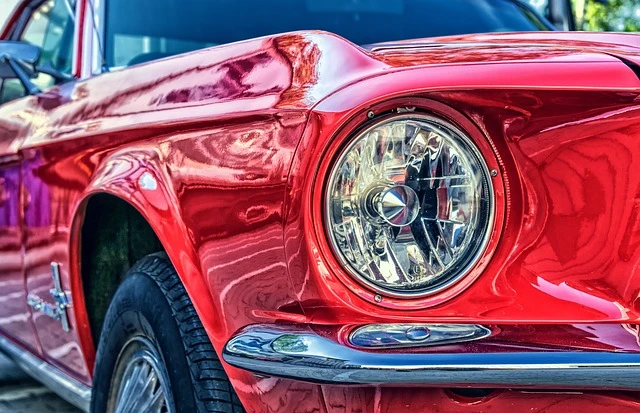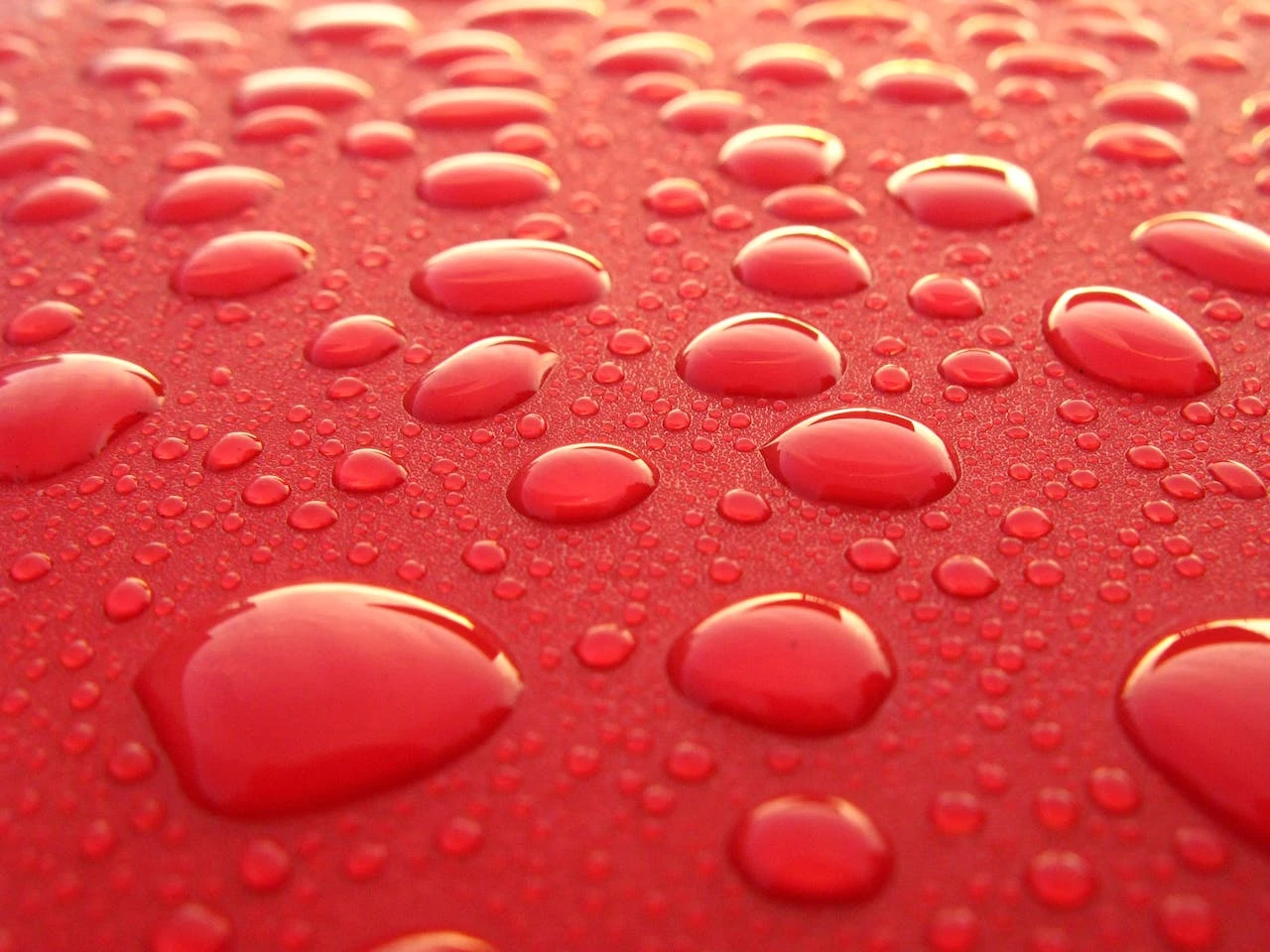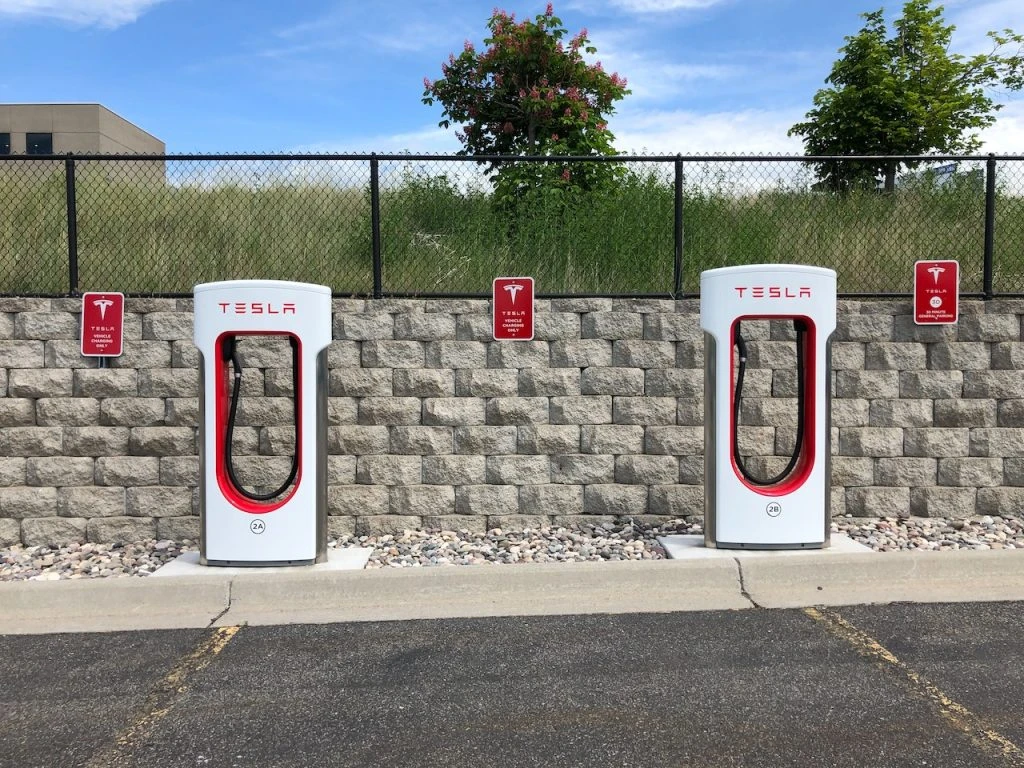Sustainability/Green
Porsche’s six-stroke engine

Who loves a good internal combustion engine (ICE)? Confession time would have me say that I still love the special characteristics of an ICE and the awesome soundtracks that they can make – none being more special than a sonorous and legendary V8 or even a fully vocal high-pitched straight six.
Now there is news in the hood that Porsche has patented some new technology whereby the introduction of a six-stroke cycle for an ICE of theirs will be made. The common four-stroke cycle that is already used by almost every auto manufacturer, including Porsche, has four strokes: intake, compression, ignition, and exhaust. Porsche states that the six-stroke cycle will make considerable gains in power output while also lowering its levels of emissions. This is great news for ICE fans.
How does it work and what’s the difference? As the numbers suggest, the conventional four-stroke cycle makes a power stroke one in every four times that the piston moves on its vertical axis. Thus, in a conventional four-stroke engine, each piston helps to drive the car about 25% of the time. Porsche’s new six-stroke engine will provide a power stroke twice in its six-stroke cycle – that’s two power strokes out of every six that the piston moves on its vertical axis (or one in three). This means that each piston is helping to power/drive the vehicle about 33% of the time it’s moving. The six-stroke cycle works as follows: intake fuel and air, compress the fuel and air mix, ignition (power), intake more fuel and air, ignition (power), and exhaust.
By allowing the piston to have a variation in its travel length inside its chamber via clever internal gearing and a special vent design, the six-stroke engine can produce more power strokes within its cycle. For the first three strokes, the piston works like a normal four-stroke. Then, on the fourth stroke, the special gearing allows the piston to drop lower in its chamber, presenting some more scavenging ports that allow more fuel and fresh air to enter the cylinder while the exhaust gases escape out the exhaust ports. The fifth stroke ignites the fresh fuel mix, and then the sixth cycle gets rid of all burnt/spent gases.
Who wouldn’t want a great sounding faster and more efficient new Porsche sports car? However, this is not all that the clever team at Porsche have been up to. Porsche has already worked towards creating a fuel that is considered to be a carbon-neutral synthetic fuel made from carbon dioxide (CO2) that has been captured from the atmosphere. That’s right, it is essentially using or recycling atmospheric carbon as fuel for their ICE vehicle.
While still leading the charge for ICE fans, Porsche has not abandoned EVs. It is also worth noting that Porsche is also going in all guns blazing with EV technology as well. Most new models of Porsche have an EV in their line-up already, and the Taycan is a pure EV.
All the same, I’m fascinated by this new six-stroke technology and am looking forward to seeing it in whatever new offerings Porsche decides to serve up.

Hydrogen-Based ICE?

How does a 2.0-litre 4-cylinder engine boasting 302 kW of power at 6500 rpm and 500 Nm of torque between 3000 and 4000 rpm sound to you? To my ears, this is pretty impressive stuff on any given day.
Big entities AVL Racetech and Hungarian HUMDA Lab have used their know-how to work on advancing the hydrogen internal combustion engine (H2 ICE). These engines have long been known for their low performance and lean-burning capacity, but AVL Racetech and Hungarian HUMDA Lab have succeeded in producing something that changes this impression completely.
According to Toyota, the future of vehicle transport and mobility lies in this new type of engine and its resulting powertrains. The 2.0-litre H2 ICE was put through its paces on a testbed and confirmed that the following top values calculated previously in simulations were a reality. Apart from the benefits that the H2 ICE has for the planet in reducing fuel emissions, the level of power that this new technology can produce is staggering.
To put some context on the level of power that this 2.0-litre H2 ICE motor produces, let’s think of it this way. The brand new engine can reach highs of around 153 kW (205 horsepower) per litre, which is even more than the Bugatti Chiron’s 185 horses per litre!
Cleverly designed PFI water injection systems moderate the combustion in the chambers and prevent any potential engine damage from occurring. The PFI water injection system introduces water into the intake air, which improves pressure levels. It also reduces the temperature of the combustion chamber as it evaporates. The air demand, which is lower than during lean combustion, is provided by a waste gate turbocharger that has been especially designed for the sole purpose of improving pressure levels and reducing the combustion chamber’s temperatures.
The H2 ICE process differs from hydrogen combustion in a fuel-cell vehicle, which works more along the lines of a traditional engine but using hydrogen instead of gasoline. So, the H2 ICE converts hydrogen into electrical energy to power an electric motor.
The H2 ICE project leader, Paul Kapus, Manager of Development Spark Ignited Engines, stated that. “At the end of 2022, we announced for the first time, that we would be working on a two-litre, hydrogen-powered racing engine with stoichiometric combustion and PFI water injection… Our goals were 500 Nm of torque and an output of up to 300 kW… We are proud to have been able to validate those figures on the testbed.”
Ellen Lohr, the director of Motorsport AVL, mentioned that the results of the testing of the new motor means that it is a competitive racing package with this technology. The goal for the AVL Racetech team is to lead motorsport into a sustainable future. The next step will be to test the new H2 ICE concept in the heat of battle on a racetrack.
This technology could surely influence the direction of EVs into the future. Watch this space!
Carnauba Wax: Giving Your Car A Brazilian

Christmas is just around the corner, and many car enthusiasts have a pretty shrewd guess that one of their relatives will give them car wash products as a present. Polish and all the rest of it is one of those go-to presents, along with socks and underpants for guys, and bath salts or scented soaps for girls. One of those products may, if you’re lucky, contain carnauba wax (note: this statement applies to the car cleaning products, not the undies or bath salts).
I used to think that carnauba wax was a brand name and I wasn’t the only one to think this, I discovered after a few quick conversations with friends. However, this isn’t the case. Carnauba wax is a generic plant-based product that is known for its high shine and toughness.
These days, it’s nice to be using something that originally comes from a plant rather than being stirred up in a lab. This is the case for carnauba wax, although your car polish will be stirred up in a lab somewhere, and the wax goes through a fair amount of processing before it gets into the package waiting for you in your Christmas stocking. It’s a product from the leaves of a palm tree that grows only in parts of Brazil, which is why you’ll also hear this wax being called “Brazil wax” or “palm wax”. The name “Brazil wax” is out of fashion at the moment, probably because that term has another meaning – although you can use carnauba wax for a Brazilian wax.
The palm tree in question is Copernicia prunifera or the carnauba palm, and the wax is just one of its many products. Although the tree is grown extensively in the suitable parts of Brazil commercially to get this highly desirable wax, the rest of the tree is pretty useful as well. It produces fruits that are used as animal feed, and for making jelly and a type of flour, and even coffee substitutes and oil. The wood is resistant to termites and is good for making houses in the local area that resist these pests. The leftover bits of the leaves after the wax has been removed are used for textiles or are used as feedstock for biofuels. And just in case that wasn’t enough to give the carnauba palm plenty of green credit, it also grows well in saline soils that aren’t any good for other crops, it’s resistant to drought, and because the trees aren’t cut down to harvest the leaves, they provide a good habitat and food for wild birds and sequester carbon while they’re at it. Wins all round!
The leaves of the carnauba palm have a natural wax coating that help it retain moisture and to stand up to other stresses, such as insect attacks. After the leaves have been cut from the trees, which is done a couple of times during the dry season, they are left to dry in the sun. This makes the wax dry to a crumbly yellow-white powder. After that, the leaves are beaten out to release the wax, and the powdered wax is collected. Various other things can be done to it before it’s exported. In fact, because of the properties of the wax in its raw state, you wouldn’t be able to do much with it unless you mixed it with this and that and/or refined it.
Carnauba wax has about the highest melting point of all the natural waxes: a shade over 80°C, in contrast to beeswax, which melts at around the 60-degree mark. It’s also very hard as well as being able to produce a high shine. This makes it perfect for use in a polish for cars, as it’s long-lasting and good-looking as well as being protective.
As well as being used in car polishes, carnauba wax turns up in a variety of other products. As it’s plant-based and nontoxic, it’s safe to use in cosmetics such as lipsticks (another go-to Christmas gift for women) and for coating some types of sweets, such as M&M chocolates (yet another generic gift idea). As a food additive, it’s got the E-number E903. It also turns up in surfboard wax, shoe polish, dental floss and furniture polish. But don’t try eating your car polish. The carnauba wax will have been mixed with various solvents to make the polish.
Car wash products containing carnauba wax come in three types: pastes, sprays and liquids. Pastes are the purest form of the product and are the most long-lasting, although it requires a fair amount of elbow grease and/or professional tools to apply properly. Sprays are the easiest to apply but don’t last as long. Liquid forms of carnauba wax are in the middle, being fairly easy to apply but longer-lasting than a spray.
Some synthetic waxes last longer than carnauba wax, which lasts about 3–5 months, depending on where you keep your car, the weather, how many incontinent seagulls have flown overhead, how often you wash your car, etc. However, carnauba wax is cheaper, as well as being a natural product with all the benefits mentioned above.
The only real downside about carnauba wax is the fact that some of the commercial plantations and harvesting operations pay their workers poorly – and it’s quite a labour-intensive job that can be and is done by hand. Although some organizations are getting their act together to ensure that their carnauba wax comes from properly responsible suppliers that treat their workers right, even this isn’t without its problems, given that carnauba wax comes from Brazil and only from Brazil, and that this is a country that got a score of 38/100 in the latest corruption index (where 0 is totally corrupt and 100 is not corruption whatsoever; Australia has a score of 75/100) and – at least according to my Brazilian sister-in-law who has friends and relatives in the coffee industry – producers have to pay a hefty fee to get Fair Trade certification, which puts off a lot of smaller cooperatives from getting this certification. So things get a bit messy on the ethical front. I’d still rather buy a product that’s got a natural origin, is good for the environment and keeps real humans employed instead of robots. In my books, it comes down more on the Nice side of the ledger rather than the Naughty side.
One last warning: if you want to put carnauba wax on your wish list for gifts, make sure that you (a) specify that you want the automotive sort, not the cosmetic sort and (b) call it carnauba wax, not Brazil wax or Brazilian wax, or you never know what you might end up with.

EV Etiquette

I recently came across a news article about another publicity-related EV road trip in the USA, this time involving the US Energy Secretary. I won’t go into the full details of the road trip in this article (you can read it here ) but it seems as though Ms Granholm was guilty of some very, very bad manners. Specifically, the people in this road trip convoy encountered the same problem as the CEO of Ford USA in his Route 66 road trip, namely that there was a bit of a shortage of EV charging points. You may be scratching your head at this point, as you’ve probably seen a few of these stations cropping up all over the show – they seem to be in the carparks of every second big box store. However, you have to remember that although there seem like there are plenty of them and they’re easy to find, charging up takes a lot longer than filling up. If you come along to a petrol station and you find that all the bowsers are taken, you won’t have to wait more than a few minutes until one comes free and its your turn. However, in the case of an EV charging station, you’ll have to wait for the other person to finish charging (which could be more than half an hour) and then you’ve still got to charge your own vehicle. This can put a serious dent in your working day if you hadn’t planned for that extra time.
The very rude solution found by Granholm et al. was to send an ICE vehicle ahead of the convoy to park in the EV charging space to reserve it, and they got away with this, as that particular state didn’t have a law against ICE vehicles parking in EV charging spots. However, it put quite a few backs up, especially for one family that came along with a grumpy baby in their EV really, really needing to juice up so they could run the air conditioning. Not a good look at all.
Of course, this highlights a problem with the infrastructure that it’s beyond you or me to solve. If governments are serious about encouraging the uptake of EVs, then they’re going to need to do something about charging stations (and capacity for electricity generation, but that’s another story). Nevertheless, given that EVs are probably here to stay, what can you do to ensure that you don’t become one of those drivers who gives EVs a bad name? Here’s a list of my top tips:
- Factor in the possibility of other people using the charger when you plan your trip and calculate the time needed. You may not be able to guarantee a spot at the DC fast charger.
- If someone gets to the charger before you do, don’t throw a hissy fit. They’ve got as much right to it as you do. Definitely don’t do anything pushy, like sending someone ahead to stand (or park) in the spot you want, or start a fight (yes, this has actually happened).
- Think of public charging points as emergency top-ups. It’s not like the situation with ICE vehicles where you can only fill up at the garage. So charge at home (and at work) as much as you can. If you don’t have to use the public charger, don’t.
- If you have to go slowly because you’re running out of charge and the nearest charging station is still a few kilometres down the road (what my ICE-driving brothers refer to as the Nissan Leaf Limp), don’t hold up traffic behind you. Pull over to the side and let them pass.
- Never unplug someone else’s vehicle from the charger while its charging, even if that car is unattended. Some apps may allow you to unplug a fully charged car, but if you don’t know for certain, then don’t do it.
- Don’t just park in the charging point, even if you are driving an EV. They are charging points, not EV-only car parks.
- Some charging points have time limits. Respect these.
- If you’ve left your car to charge while you do a spot of shopping, keep an eye on progress via the appropriate app on your phone.
- Above all, remember that although you have an EV and you’re doing it to save the planet, this does not give you the right to be a jerk to people who drive ICEs (and they don’t have the right to be jerks to you, either). Be proud of your choice, sure, but don’t look down on other people – they might not be able to afford an EV, or an EV might not suit their workplace, or they might be country bumpkins for whom EVs don’t really work. So be a good EV ambassador.